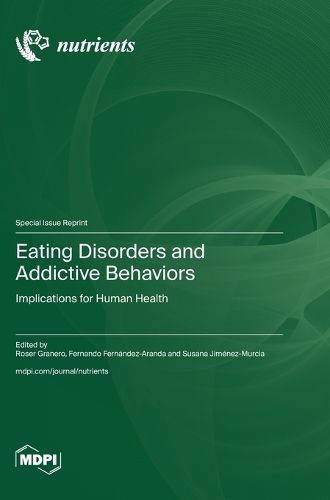Readings Newsletter
Become a Readings Member to make your shopping experience even easier.
Sign in or sign up for free!
You’re not far away from qualifying for FREE standard shipping within Australia
You’ve qualified for FREE standard shipping within Australia
The cart is loading…






This title is printed to order. This book may have been self-published. If so, we cannot guarantee the quality of the content. In the main most books will have gone through the editing process however some may not. We therefore suggest that you be aware of this before ordering this book. If in doubt check either the author or publisher’s details as we are unable to accept any returns unless they are faulty. Please contact us if you have any questions.
Eating disorders (EDs) are psychological conditions that have a significant impact on physical health (e.g., gastrointestinal, renal, and cardiovascular) and psychological well-being (e.g., relationships with others, personal growth, and autonomy). The most common eating disorders include anorexia nervosa, bulimia nervosa, and binge eating disorder. These three conditions cause clinical impairment in different areas of functioning and share an excessive focus on weight and body image, leading to dangerous eating styles that affect the body's ability to obtain adequate nutrition. Behavioral addictions (BAs) are non-substance-related addictions characterized by an individual's incapacity to resist impulses toward rewarding stimuli despite the adverse consequences. Aside from gambling and gaming disorders (the two most frequent conditions within the spectrum of BAs), other maladaptive and uncontrolled behaviors include compulsive sexual behaviors, compulsive buying, and kleptomania. The etiology of EDs and BAs comprises a complex network of biological, psychological, and contextual social factors. The onset of these conditions is usually during school age and adolescence; the progression of these disorders occurs throughout the lifespan. Diverse phenotypes have been identified according to ED and BA subtypes, and it has been observed that the physio-pathological mechanisms underlying each behavioral profile can play a role in the treatment outcomes.
$9.00 standard shipping within Australia
FREE standard shipping within Australia for orders over $100.00
Express & International shipping calculated at checkout
Stock availability can be subject to change without notice. We recommend calling the shop or contacting our online team to check availability of low stock items. Please see our Shopping Online page for more details.
This title is printed to order. This book may have been self-published. If so, we cannot guarantee the quality of the content. In the main most books will have gone through the editing process however some may not. We therefore suggest that you be aware of this before ordering this book. If in doubt check either the author or publisher’s details as we are unable to accept any returns unless they are faulty. Please contact us if you have any questions.
Eating disorders (EDs) are psychological conditions that have a significant impact on physical health (e.g., gastrointestinal, renal, and cardiovascular) and psychological well-being (e.g., relationships with others, personal growth, and autonomy). The most common eating disorders include anorexia nervosa, bulimia nervosa, and binge eating disorder. These three conditions cause clinical impairment in different areas of functioning and share an excessive focus on weight and body image, leading to dangerous eating styles that affect the body's ability to obtain adequate nutrition. Behavioral addictions (BAs) are non-substance-related addictions characterized by an individual's incapacity to resist impulses toward rewarding stimuli despite the adverse consequences. Aside from gambling and gaming disorders (the two most frequent conditions within the spectrum of BAs), other maladaptive and uncontrolled behaviors include compulsive sexual behaviors, compulsive buying, and kleptomania. The etiology of EDs and BAs comprises a complex network of biological, psychological, and contextual social factors. The onset of these conditions is usually during school age and adolescence; the progression of these disorders occurs throughout the lifespan. Diverse phenotypes have been identified according to ED and BA subtypes, and it has been observed that the physio-pathological mechanisms underlying each behavioral profile can play a role in the treatment outcomes.